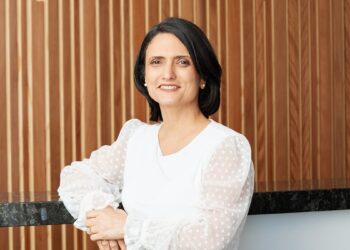Speaking at the Smarter SMSF Virtual Day 2021, Smarter SMSF CEO Aaron Dunn said that with the profound shift in the way the sector is operating, there continues to be a growing “gap” between specialists and “generalists” working with SMSF clients.
“When you think about the SMSF population in regard to the rough 600,000 funds, around 9 per cent of those are currently undertaken by 65 per cent of all practitioners that are registered as tax agents,” Mr Dunn said.
“On the flip side, we know that 35 per cent of practitioners look after approximately 91 per cent of all funds, so we have a very interesting dynamic within the industry based upon the number of agents and then the number of funds that they actually look after.
“We’ve got firms that might only look after a handful of funds and we’ve got firms that are now looking after many thousands of funds, so there’s obviously a very distinct difference within the industry around skill sets and the way in which technology is adopted.
“This disproportionate allocation must surely create headaches for the regulator, where the level of skills and knowledge on SMSFs has continued to increase with the growing complexity in the super and tax laws.”
From a compliance perspective, Mr Dunn said this leads to a closer assessment of the risk issues coming out of the percentages from the SMSF population and how they correlate back to those representations in tax agent space.
“You can start to look at those key areas and if these compliance issues are continually identified, is there going to be some type of natural response in the future? This response might have to be done at a regulator level or we might see over time a natural attrition because there is a bit of attrition being seen with a number of agents working in the space,” he said.
“As pricing becomes more competitive, the use of technology ramps up and you do see fairly distinct differences in service providers that therefore means that it just gets too hard for some practitioners in the space.”
The continued impacts from technology
However, one of the main developments in the SMSF industry is the fact that software is becoming a great equaliser for the providers, Mr Dunn noted, and those who are using whether its BGL Simple Fund 360, Class or SuperMate have witnessed the improvements that have been made over the past decade.
“Software is a great equaliser and we don’t really have anyone over and above the software providers that are building something that gives them a huge natural advantage other than the fact that they’ve got teams investing time, effort and energy into really maximising what they can possibly get out of that software,” he said.
“The improvements here obviously aren’t going to stop and we’re seeing the efficiencies really come out of what the software providers continue to do and those that have specialisation inside the sector.”
But Mr Dunn said one of the main challenges he has seen in the widening gap is the differences between adopters and implementers when it comes to technology.
“So, it’s one thing to go ‘let’s move to the cloud’, but you’re not going to get the benefit unless you see that as an enabling technology. A lot of people think just by moving to Class or something of the like is going to solve all our problems, but it doesn’t because you’ve still got to go through all the processes such as how you’re going to obtain information from your clients and fees.
“What we’ve found from our research previously is that the biggest gap from a general practitioner into a specialist organisation is the fact that specialists actually devote the time to it.
“The biggest challenge for the general practitioner is they’re just so time-poor because they’re doing so much that they don’t get the time, effort and energy to put into processes to really help them take that next step.
“With many general practitioners simply too busy in their day-to-day activities, it won’t be long before the area of SMSF gets too hard. In fact, this has slowly been recognised since 1 July 2017 when reviewing the number of tax agents within the SMSF sector.”
With the widening gap between the specialists and those that are more generalised in the work that they’re doing in SMSFs, Mr Dunn said, ultimately, this may see some form of rationalisation in the sector.
“It’s not to say that those who might be more generalist in terms of the work you do need to move out of the sector, but you do clearly just need to be abreast of what is happening and making sure that you are really looking at maximising the benefits of the technology that you’re investing in inside the SMSF industry,” he said.
“This might be the fact that we would see some level of contraction over time in the number of service providers. We’ve seen that in a regulatory context, of course, with our ASIC auditors where in the first instance we needed that registration process to ASIC and then, obviously, we’re seeing potentially some further issues around the requirements of independence with the APES110.”



I wonder if there is any correlation between the number of funds administered and the proportion of funds lodged late?
It’s a bit hard to have a “United” front when the independent sector is basically the equivalent of the Myanmar people, and the FSC and their supporters are the equivalent of China and the Myanmar junta.
Anyone who stands up is vilified or ignored whilst lip service is paid to a right to speak especially if it doesn’t require a commitment to the problem.
Royal commission showed instos were the problem. Instos leave and those left who did no wrong are being told it’s on them. It all looks a little contrived.
At the end of the industry really needs the ATO/TPB to start scrutinizing the firms who continually lodge late year on year and may even be in an hole they can’t get out of, I know it is a novel concept to ask the ATO/TPB to actually govern but it would help clean things up a lot.